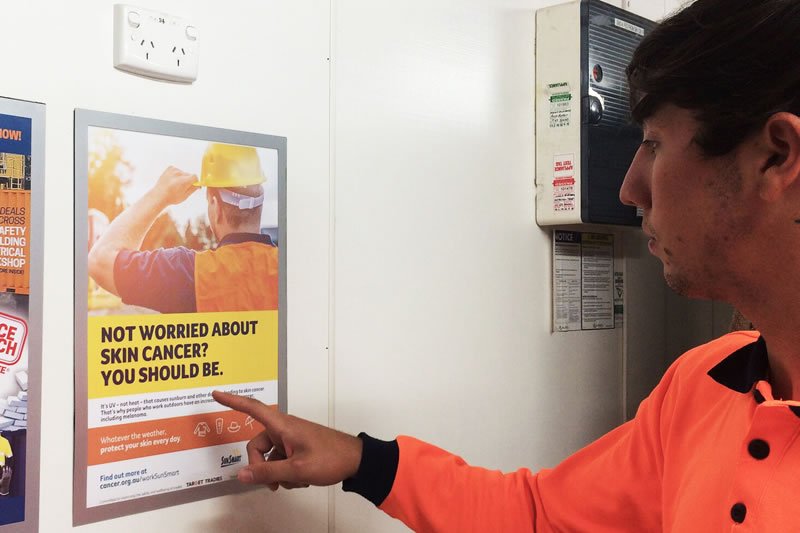We look at Work Health & Safety Management Systems, PPE options, and training and resources.
- WORK HEALTH & SAFETY MANAGEMENT SYSTEMS
By Brian Beecroft, TTIA
Work Health & Safety (WH&S) needs to be planned and managed, it does not just happen. To manage means to plan, lead, organise and control an organisation and its people to achieve certain identified goals.
A Safety Management System is defined as “developing, implementing, achieving, reviewing and maintaining the WH&S policy to manage the WH&S risks associated with the organisation”.
By introducing a Safety Management System, a company can create a framework in which WH&S performance can be monitored, improved and managed in a systematic way.
By developing such a system companies can move from a reactive to proactive approach to WH&S and prevent work related incidents and injuries before they happen.
If management and workers within a company are committed to improving WH&S through effective management then the company can benefit from the following:
- Reduction of workplace incidents and injuries.
- Compliance with WH&S Legislation.
- Compliance with your safety authority’s requirements.
- Reduction of Workers Compensation costs.
- Improves safety culture.
- Increases productivity.
- Creates better employee relations.
Managing risk
In the past, an effectively implemented safety system could reduce the cost of a WH&S prosecution in the event of a serious injury. However, these days an effectively implemented safety management system can prevent a company being prosecuted by the safety authority.
A Safety Management System enables a company to achieve the following objectives in a planned and systematic way:
- Identify and manage risks to people, processes, equipment and the environment.
- Define WH&S responsibilities and accountabilities.
- Establish controls and set standards.
- Measure and evaluate results for continuous improvement.
Ongoing process
To have an effective safety management system is not a once-off event but must be an ongoing process, taking into account all areas of WH&S in the workplace.
Some of the areas a system covers include:
- Training;
- Risk assessment;
- Consultation;
- Incident reporting and investigation;
- Manual handling;
- Hazardous substances;
- Plant and machinery;
- Electrical;
- Contractors and visitors; and
- Noise and dust.
Implementation of a safety system
It must be noted that having a written safety system and the implementation of such a system are two different things.
Some companies have written safety policies, programs and procedures and yet they are stored in the safety manual in the office and never implemented.
An effective safety system must be managed, which means it must be developed, implemented, maintained and reviewed. What is stated in the policies, programs and procedures is what must happen on the workshop floor and in the day-to-day running of the workplace.
This is the benefit of a regular safety audit conducted by TTIA, which is a practical review of your safety documentation to make sure it is being implemented.
For more information, contact TTIA on (02) 9264 0011 or visit ttia.asn.au
- PPE OPTIONS
Inappropriate clothing remains a significant contributor to injuries in the workplace, whether through loose-fitting items becoming caught in machinery, or the item itself causing the damage, as can happen with poor-fitting workboots and safety glasses that don’t fit snugly, allowing debris to get past.
A combination of PPE that appeals through good fit and practicality, plus education, can make a real difference in compliance.
Women’s sizes
One downside of workwear and safety gear is that it’s often designed for men.
For heavy-duty practical workwear and high-vis from small fits to plus sizes and with several maternity styles, She Wear is an Australian company with a great set of options (www.shewear.com.au). They also produce an excellent range of footwear, plus a women’s-fit selection of safety glasses, hard hats and some gloves.
You’ll also find a good range of clothing at RSEA Safety (www.rsea.com.au) and Kiwi brand Clogger (clogger.com.au) produce specialty items for women in forestry.
Steel Blue (steelblue.com/au) have an extensive range of women’s safety footwear and are available across the country. Oliver Footwear (www.oliver.com.au) has also expanded its women’s range and has stockists around the nation so you can check sizes.
Honeywell produce top-end safety glasses in a women’s fit, and major optometrists including OPSM and Specsavers carry a range of women’s styles that fit narrower heads for prescription options.
Boots that fit
Providing ill-fitting work boots is not only an annoyance to staff, it can leave employers liable if they cause damage or exacerbate existing foot conditions. Happily, retailers have stepped in to fill the gaps in the market.
Wide Load (www.wideloadworkboots.com.au) stocks a range suitable for both wide feet and for fitting orthotics, and has an advice service for people with high insteps and other unusual fitting issues.
RSEA Safety (www.rsea.com.au) also provides a number of boots that come in fittings from men’s size 3 to 15, with specialist safety requirements.
Lightweight composite cap technologies are coming onto the market for situations that don’t require all the toughness of steel and these are worth looking at in suitable environments: lowering the weight of boots improves comfort for the user.
While safety boots are essential on construction sites and similar, in some workplaces they can become more of a hindrance than help, as they restrict movement for activities such as ladder climbing and driving. Make sure your choice of footwear is fit for your site and purpose.
Sun protection
Australia remains the skin cancer capital of the world. A recent partnership between Target Tradies and the Cancer Council shares the message of sun safety to construction workers, but the Cancer Council products that go with it are suitable for all industries, including one-litre sunscreen containers that fit neatly into brackets screwed beside the office door.
Sunglasses are another important part of their product range, including a series of safety sunglasses suitable for protecting eyes from UV and debris.
For more details, visit www.targettradies.com.au or www.cancer.org.au/preventing-cancer/sun-protection
- TRAINING AND RESOURCES
There are huge numbers of resources out there to help, ranging from state and federal government bodies, to private contractors and industry associations. The following are just a start.
TTIA training
As well as providing practical safety audits (see page 22), TTIA runs a series of workplace safety training courses from 1-2 hours to multi-day courses. These include OH&S Risk Management, Accident Investigation, Machine Guarding, and a range of first-aid options.
Visit ttia.asn.au/ttia-training-courses
MGA TMA training
For simple, standardised training, MGA TMA offers a series of Safe Work Instructions at $10-$15. These range from the obvious, such as the Ladder Safety and Loading Bay guides, to those it’s easier to overlook in a management plan, such as dealing with Aggressive, Violent or Abusive People and Cleaning With Chemicals.
For more comprehensive training, a series of low-cost ($20-$30) online WH&S courses is offered, including Hazard Identification and Risk Management, Emergency Management, Manual Handling and Workplace Health & Safety Induction, as well as a number of safety-oriented courses among the general training options.
You’ll find the full training course guide at www.mga.asn.au/training/courses
TABMA training
Workplace Health & Safety (WHS) – Introduction is a TABMA introductory course that assists with compliance and helps workers understand the requirements of the WH&S legislation and regulation. The course includes a practical self-assessment tool that will assist students’ understanding of the requirements and the importance of a PCBU (employer) meeting their workplace health and safety obligations. Students will complete the unit of competency FPICOR3201 Implement safety, health and environment policies and procedures.
There are no pre-requisites for this course except a desire to know more about WH&S On successful completion of the course the Registered Training Organisation – TABMA Training will issue a Statement of Attainment. The length of the course is one day, including all assessments.
What students learn:
- Key strategies for implementing effective safety, health and environmental practices;
- How to assess and control risk;
- How to follow emergency procedures;
- Self-assessment audit tool;
- Implement defined environmental procedures;
- How to effectively report safety concerns;
- Typical hazard identification in your business; and
- Developing a safety-first culture.
This course is very reasonably priced at $550 per person
For a schedule of all upcoming TABMA Training courses or for specific enquiries about this course, please contact our RTO Manager June Dunleavy on (07) 3456 7069 or june.d@tabmatraining.edu.au
Government organisations
Safe Work Australia provides a one-stop shop for law and regulation, data and links to state organisations at www.safeworkaustralia.gov.au. It also has a comprehensive library of resources at www.safeworkaustralia.gov.au/resources_publications/allitems
Workplace Safety NSW (www.safework.nsw.gov.au) provides multiple advice, training and support options to assist employers and employees.
WorkCover Queensland (www.worksafe.qld.gov.au) has an impressive library of forms and resources, including podcasts.
WorkSafe Victoria (www.worksafe.vic.gov.au) focuses on practical links through its Create a Safe Workplace portal.
SafeWorkSA (www.safework.sa.gov.au) includes free online learning programs.
WorkSafe WA (www.commerce.wa.gov.au/worksafe) provides an immensely practical set of resources designed for workers and employees to find what they need in the quickest possible time.












